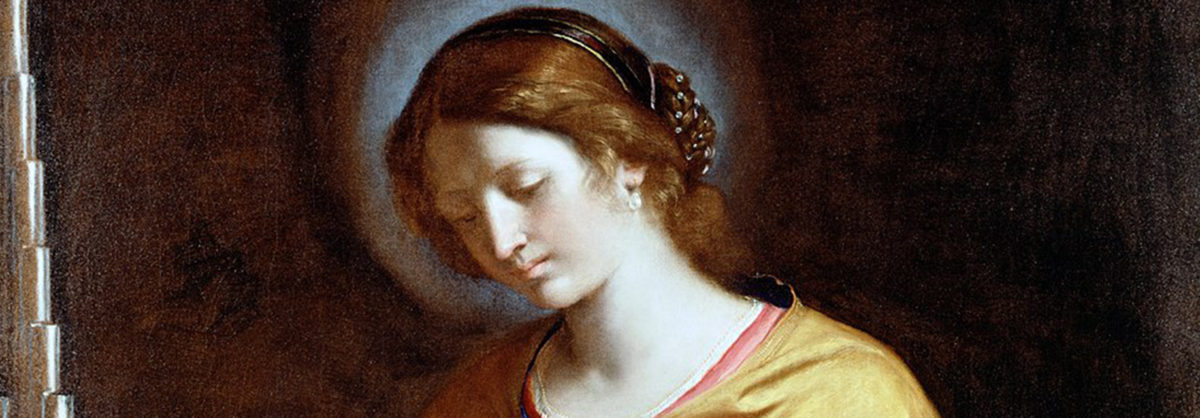One day when our kids were still small, I called a friend. “Hey, it’s Danielle,” I said. “Oh, I knew it was you before you said anything,” my friend replied, “I could tell by the background noise.”
Another time, my childless brother-in-law came for dinner, and upon entering our living room, he winced. “Wow,” he said, “It sure is loud in here!”
On neither occasion did I think my home was particularly noisy. I suppose I had gotten used to the bedlam of multiple small children running around and the cacophony they can create. One thing I do remember was that in rare moments when I drove somewhere by myself, I kept the radio turned off and let the sweet balm of silence wash over me. Peace and quiet felt like a rare and indulgent treat for my soul.
Recently, I was reminded of those noisy days when my youngest child, now fifteen, came down the stairs one morning and smiled at the Mozart playing from a speaker in the kitchen.
“It’s always so peaceful here in the mornings,” he said.
I smiled back. He has no idea how far we’ve come.
The sounds we hear fill not just our ears, but also our hearts and souls. I know this whenever I attend Mass where there is beautiful music and singing, and I find my whole being lifted up by beauty towards God. I also know it when I hear less-than-heavenly music blaring from a teenager’s room or the sound of a passing truck. Both sounds make me wince much as my brother-in-law did in our living room all those years ago.
The feast day of St. Cecilia on November 22 is a wonderful opportunity to reflect on the gift of music in our lives. The patron saint of music, Cecilia is one of the better-known Roman martyrs, believed to have been killed in the late second or early third century.
As a Christian convert, Cecilia took a vow of virginity but her parents disregarded her desire to remain a virgin and married her off to a pagan nobleman named Valerian. During the wedding ceremony, she is reported to have sat apart, singing to God in her heart. After the ceremony, she convinced her new husband to respect her vow of virginity by telling him that an angel of the Lord was watching over her and would punish him if he did not. When Valerian asked to see this angel, Cecilia told him that he would if he converted. When Valerian converted and was baptized, he did indeed see an angel of the Lord standing next to his wife. The couple were later martyred for their faith, along with Valerian’s brother.
The story of St. Cecilia singing to God in her heart is what has made her the patron saint of music—especially liturgical music—and even today, musical festivals are celebrated in her honor each November.
Centuries later, St. Elizabeth Ann Seton was another woman who appreciated the powerful effect of music on the heart, mind, and soul. An accomplished pianist who began playing at a very young age, as a young married woman Elizabeth spent many happy hours playing music. When she was married, she and her husband William, who was a violinist, would often play music in the evenings for their growing family.
The noise and chaos of a house filled with young children must have been quite familiar to Elizabeth, yet she never lost her love of music and found great joy in teaching music to her children and her pupils at the school she eventually founded. She once wrote:
“I have so often shared the cheerfulness of a blazing fire [in the parlour], and the feeling tones of my sweet Piano. I could not help falling on my knees the moment I entered the dear scene of past happiness and shed tears…Abundantly.”
As a young woman in society, Elizabeth would have attended many concerts, operas, and balls, enjoying a great variety of music and dancing. Later in life, when Elizabeth was widowed and became Mother Seton, founding a religious community, she no longer attended social events like these but music remained an important part of her daily life due to the gift of a piano. This piano can be seen in the historic St. Joseph’s House located on the grounds of the Seton Shrine in Emmitsburg, Maryland. This building served as the first house of the Sisters of Charity of St. Joseph’s.
This month, we can celebrate the feast day of St. Cecilia on November 22 and Mother Seton’s love of music by attending a concert or music festival, by playing some beautiful music if we are gifted musicians, or by using, as I will, a Bluetooth speaker in the kitchen.
Let us give thanks to God for the great gift of music and two great saints who call us to contemplate the beauty of God’s love and the wonders of His Creation, including the ability to listen to beautiful music. And let us pray that those who cannot hear with their ears may hear music in their hearts and their souls just as St. Cecilia did at her wedding.
DANIELLE BEAN is a writer and popular speaker on Catholic family life, parenting, marriage, and the spirituality of motherhood. She is the former publisher and editor-in-chief of Catholic Digest, and the author of several books for women including Momnipotent, You’re Worth It! and her newest book, You Are Enough. She is also creator and host of the Girlfriends podcast and a popular speaker on a variety of subjects related to Catholic family life, parenting, marriage, and the spirituality of motherhood. Learn more at DanielleBean.com.
This reflection was previously published. Click here to view all Seton Reflections.
Image: Creative Commons Attribution-Share Alike 4.0 International
